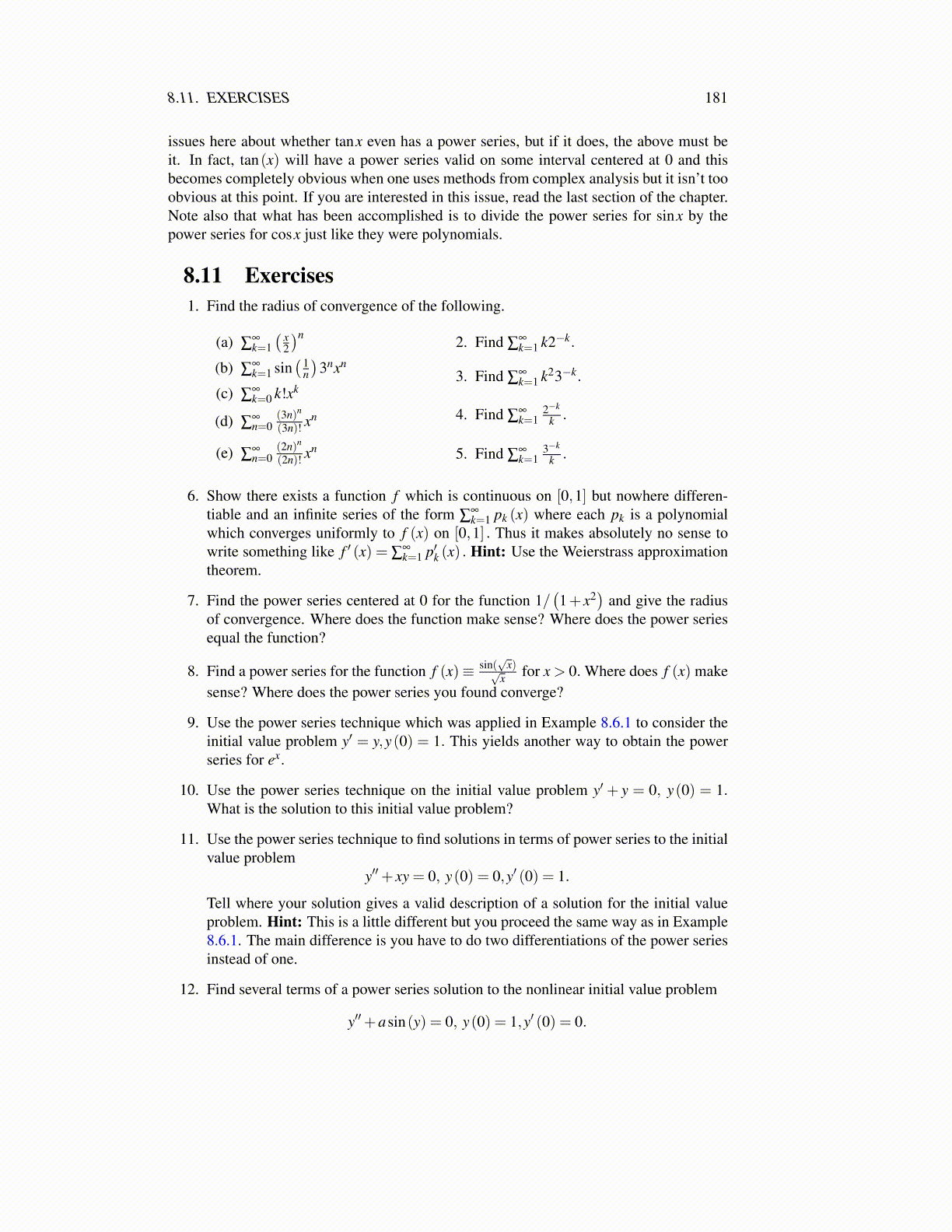
8.12. THE FUNDAMENTAL THEOREM OF ALGEBRA 181
20. Let a,b be two positive numbers and let p > 1. Choose q such that
1p+
1q= 1.
Now verify the important inequality
ab≤ ap
p+
bq
q.
Hint: You might try considering f (a) = ap
p + bq
q − ab for fixed b > 0 and examineits graph using the derivative.
21. Using Problem 20, show that if α > 0, p > 1, it follows that for all x > 0(p−1
px+
α
px1−p
)p
≥ α.
22. Using Problem 21, define for p > 1 and α > 0 the following sequence
xn+1 ≡p−1
pxn +
α
px1−p
n , x1 > 0.
Show limn→∞ xn = x where x=α1/p. In fact show that after x1 the sequence decreasesto α1/p.
23. Consider the sequence{(
1+ xn
)n}∞
n=1 where x is a positive number. Using the bino-mial theorem show this sequence is increasing. Next show the sequence converges.
24. Consider the sequence{(
1+ xn
)n+1}∞
n=1where x is a positive number. Show this
sequence decreases when x > 2. Hint: You might consider showing (1+ y)(x/y)+1 isincreasing in y provided x > 2. To do this, you might use the following observationrepeatedly. If f (0) = 0 and f ′ (y)> 0, then f (y)≥ 0. There may also be other waysto do this.
25. Let zez−1 = ∑
∞n=0
bnn! zn. The bn are called the Bernoulli numbers. Show that
b0
0!n!+
b1
1!(n−1)!+
b2
2!(n−2)!+ · · ·+ bn−1
(n−1)!1!=
{1 if n = 10 id n > 1
Hint: You might use the Cauchy product after multiplying both sides by ez−1.
8.12 The Fundamental Theorem of AlgebraThe fundamental theorem of algebra states that every non constant polynomial having co-efficients inC has a zero inC. IfC is replaced byR, this is not true because of the example,x2 + 1 = 0. This theorem is a very remarkable result and notwithstanding its title, all thebest proofs of it depend on either analysis or topology. It was proved by Gauss in 1797.The proof given here follows Rudin [24]. See also Hardy [14] for a similar proof, more dis-cussion and references. You can also see the interesting article on Wikipedia. You googlefundamental theorem of algebra and go to this site. There are many ways to prove it. This